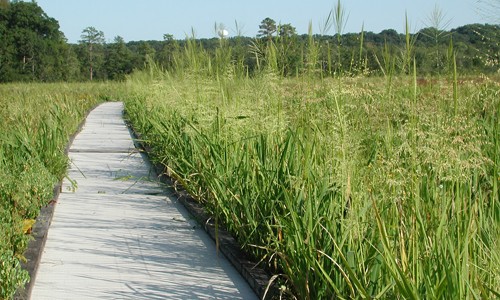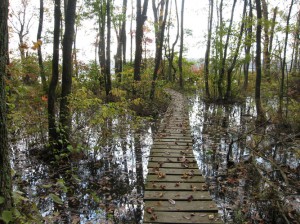To grade this lab report, click on WebbHB9/1, SP1 (1), and SP3 (1,2, and 3)...
ABSTRACT
In this lab, my partner and I observed the behavior of pill bugs. Our objective was to determine what type of environment they prefer living in. We did this by collecting 10 pill bugs and placing them in what is a called a choice chamber, a "tool" that allowed the pill bugs to move freely and choose between two different environments. Each side of the chamber had something different done to it, creating two different "environments."
By recording the number of pill bugs on each side every so often, we were able to observe and determine which environment the pill bugs preferred.
INTRODUCTION
Behavior can be defined as the way an animal or person responds to a certain situation. For an animal, behavior is the way it interacts with other animals, with other living beings, and with the environment. Animal behavior explores how animals find and defend resources, avoid predators, choose mates, reproduce, and care for their young. Questions about animal behavior fall into four different categories, two of them being proximate issues and ultimate issues. A proximate question asks how an animal knows to behave in a certain way, and an ultimate question asks why an animal behaves in a certain way. For example, in the case of a bird song, a proximate question that could be asked is "how does the bird know when/what/how to sing?" An ultimate question, for example, could be "why does the bird sing?"
Something very common in animal behavior is fixed action pattern. Fixed action patterns are, as dictionary.com puts it, highly stereotyped patterns of behavior that are characteristic of a particular species. In other words, they're instincts. An animal is triggered by a specific stimulus, causing it to go through a routine every time. An example of a fixed action pattern is the egg rolling behavior of a Greylag Goose. When a goose's egg rolls out of the nest, the goose instinctively begins to roll the egg back to the nest using a repeated movement with her beak and neck. If, while the goose is still rolling the egg back to the nest, the egg rolls away or someone takes it away, the goose will continue the movements without the egg until she has gotten back to the nest. The, the goose will relocate the egg and start again.

Imprinting is another part of animal behavior, and no it's not how when Jacob imprinted on Bella's daughter (yes, I read Twilight, don't judge me). It is when a young animal comes to recognize another animal, person, or thing as a parent. For young geese, the proximate cause for them following and imprinting on their mother is that during an early stage in their lives, the young geese see their mother moving away from them and calling them, so they instinctively follow. The ultimate cause is that geese that follow and imprint on their mother receive more care and learn more necessary skills; therefore, they have a greater chance of surviving than those geese that do not follow their mother.

Orientation behaviors, an element of animal behavior, place the animal in its most favorable environment. These behaviors include movements known as taxis and kenisis. In taxis, the animal moves toward or away from a stimulus, such as algae moves towards the directional stimulus of light in positive phototaxis as it needs light to photosynthesis. Taxis often occurs when the stimulus is light, heat, sound, or chemicals. Kinesis, on the other hand, is a random movement that does not result in orientation with respect to a stimulus. In other words, when an organism experiences unpleasant stimulus, they increase random movement in order to find an area of more pleasant stimulus. For example, when woodlice are in light, dry conditions (unpleasant), they increase random movement so that they may increase the chance of them finding dark, moist conditions.
Two learning behaviors for animals are classical conditioning and operant conditioning. Conditioning involves learning associations between events that occur in an organism's environment. Classical conditioning is a type of learning which forms an association between two stimuli. Operant conditioning is a type of learning that forms an association between a behavior and a consequence. While classical conditioning is passive on the part of the learner, operant conditioning relies on the learner to actively participate in the learning process. An experiment was done with a dog on classical conditioning by a Russian scientist known as Ivan Pavlov. In his experiment, he suggested that salivation (drooling) was a learned response. He proved this by using the sound of a metronome as a neutral stimulus before the dogs received food. After many trials, Pavlov began to notice that the dogs began to drool after hearing the metronome.
Now, the question we are asking for this lab is "Do pill bugs prefer living in a lighted environment or a dark environment?" By observing the actions and behaviors of the various pill bugs, we can determine what environment is more suitable for them.

HYPOTHESIS
My partner and I hypothesized that if the pill bugs are given a choice to either rest in a hot, lighted area or a dark, shady area, then the majority will choose the dark, shady area because pill bugs are used to inhabiting dark, cold spaces (under rocks). Our independent variable is obviously the difference in light exposure on either side of the choice chamber, while our dependent variable is the amount of pill bugs on either side. We kept the number of pill bugs, the temperature, the pH level, and the sizes of both the circular spaces and filter paper constant throughout the experiment.
MATERIALS
- (2) choice chambers
- plastic wrap of some sort (optional)
- (2) filter paper
- (10) pill bugs
- a data sheet (w/ table)
- a paint brush (or some type of brush w/ soft bristles)
- a timer (phone)
- a lamp
- pencil and paper
PROCEDURE


- Place 10 pill bugs in a choice chamber. They generally try to get out so cover the chamber with some kind of plastic wrap (if you want).
- Observe the pill bugs for to minutes. Make notes on their general appearance, movements about the chamber, and interactions with each other. Notice if they seem to prefer one area over another, if they keep moving, settle down or move sporadically. Note any behaviors that involve 2 or more pill bugs. Do not interfere with the specimens in any way.
- Make a detailed sketch of a pill bug,
- Prepare the other choice chamber and place a filter paper on either side.
- Place one side of the chamber under a bright lamp and cover the other side with a plastic wrap of some sort or another choice chamber.
- Use a soft brush (i.e. paint brush) to transfer the ten pill bugs into the second choice chamber.
- Count how many pill bugs are on each side of the choice chamber every 30 seconds for 5 minutes. Record data in a table. Continue to record even if they all move to one side or stop moving.
- When done recording, return the pill bugs into the first choice chamber.
- Graph both the number of pill bugs in the lighted chamber and the number in the dark chamber.
DATA

(my sketch of a pill bug)
Time (minutes)
|
Number of pill bugs in lighted chamber
|
Number of pill bugs in dark chamber
|
Other Notes
|
0
|
0
|
10
|
|
0.5
|
0
|
10
|
|
1
|
1
|
9
|
|
1.5
|
4
|
6
|
|
2
|
1
|
9
|
some bugs on the dark side were hiding under the filter
paper
|
2.5
|
1
|
9
|
|
3
|
1
|
9
|
|
3.5
|
2
|
8
|
|
4
|
4
|
6
|
|
4.5
|
2
|
8
|
|
5
|
2
|
8
|
|
CONCLUSION
Based on our data and observations, my partner and I concluded that the pill bugs prefer living in a dark environment to living in a lighted one. While a few pill bugs did stay in the lighted area, the majority constantly returned to the dark, shaded area. An error that occurred during our lab was that at 2 minutes, some of the pill bugs began to bury themselves under the filter paper. However, this error could actually further prove that pill bugs prefer dark environments over lighted ones.
CITATIONS
"Animal Behavior Chapter 51." Animal Behavior Chapter 51. N.p., n.d. Web. 11 Apr. 2014.
"Animal Behavior/Definition." - Wikibooks, Open Books for an Open World. N.p., n.d. Web. 11 Apr. 2014.
"Lab 5 - Animal Behavior." Lab 5 - Animal Behavior. N.p., n.d. Web. 11 Apr. 2014.
"Pavlov's Dogs." About.com Psychology. N.p., n.d. Web. 11 Apr. 2014.
"Taxis vs. Kinesis - Biology-Online." Taxis vs. Kinesis - Biology-Online. N.p., n.d. Web. 11 Apr. 2014.
http://asfgenglish12.wikispaces.com/file/view/Classical+Conditioning.pdf
http://www.scienceprofonline.org/animal-behavior/fixed-action-pattern-instinctive-behavior-FAP.html



































